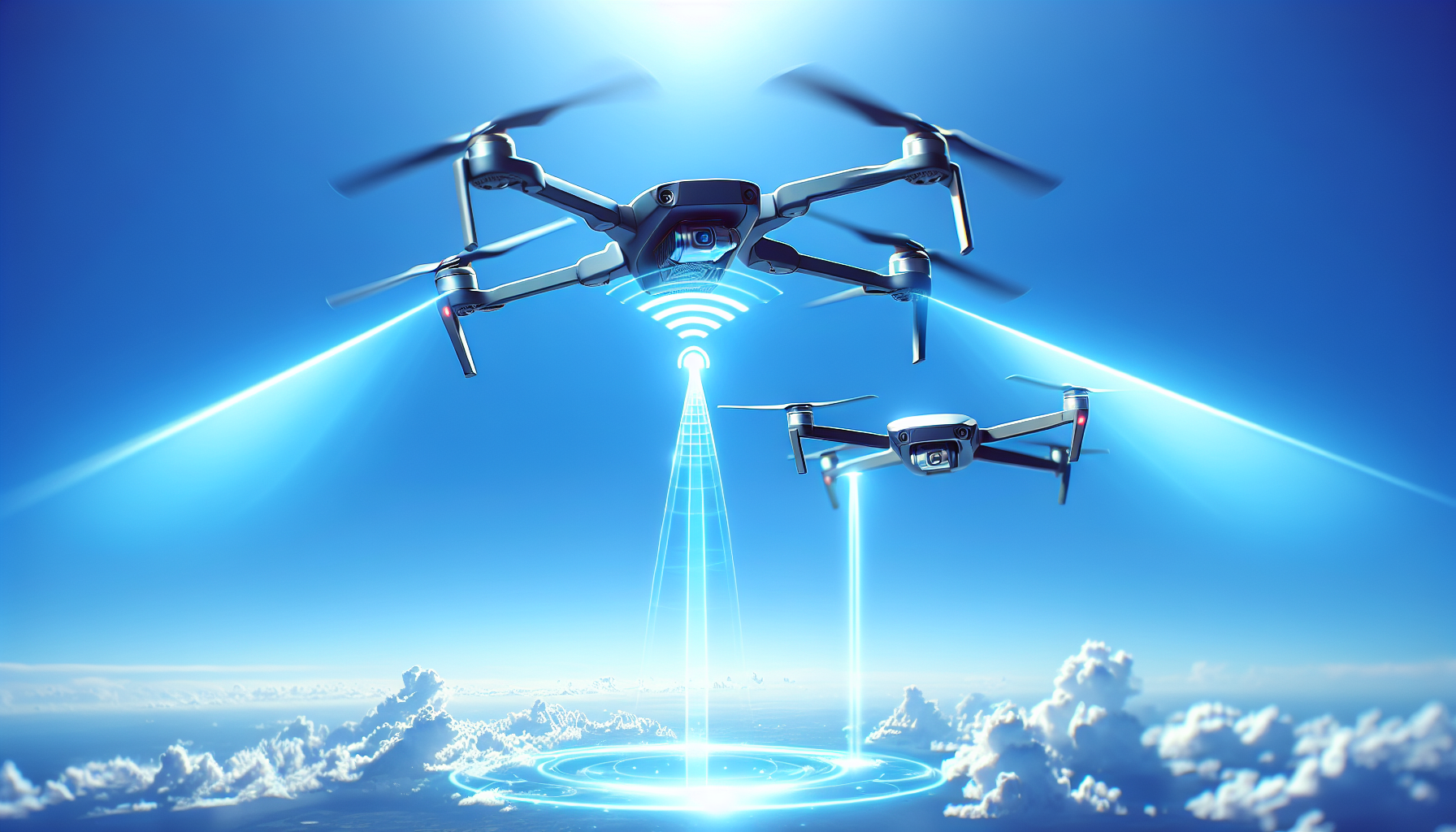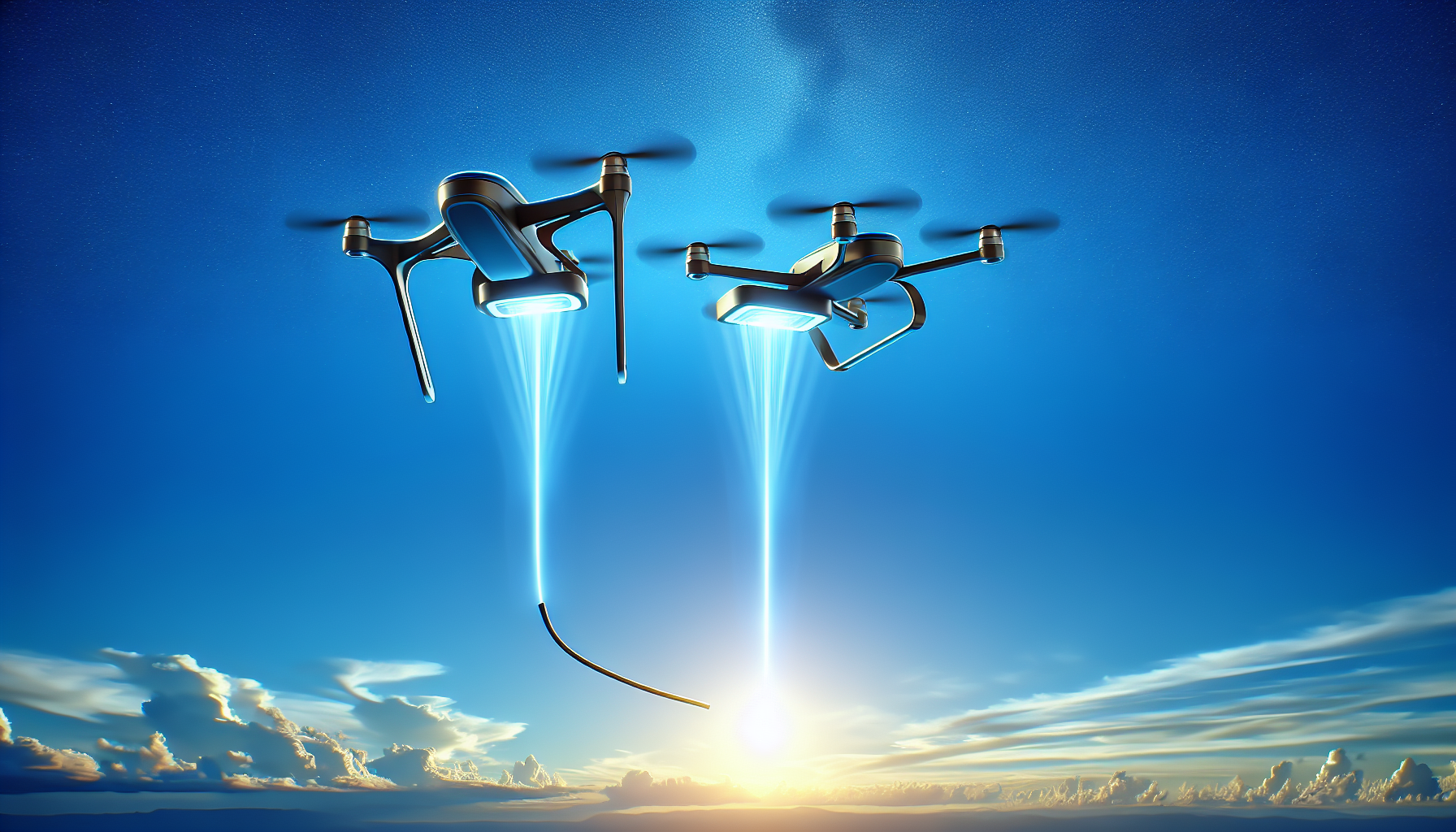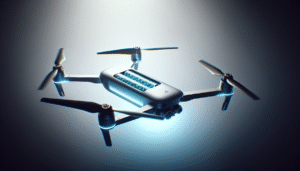Imagine drones charging one another mid-air, forming a synchronized ballet of airborne energy exchange across the sky. The notion of drones filling up on electricity from their aerial companions brings a whole new meaning to “sharing is caring.” The idea is both fascinating and seemingly plucked from the pages of a science fiction novel, yet it’s a topic worth exploring because of its potential implications for the future of drone technology.

The Concept: In-Flight Drone-to-Drone Charging
Breaking Down the Basics
At its core, the concept of in-flight drone-to-drone charging is akin to handing off a canteen mid-marathon. Imagine one drone running low on juice and seamlessly “borrowing” power from a fully charged friend hovering nearby. In theory, all of this happens hundreds of feet above us without the need for landing. This dream scenario involves wireless energy transfer, a technological marvel that’s been hovering on the horizon for some time now.
Why Wireless Charging?
Why, you might ask, are we even bothering with this notion of aerial power-sharing? The simple answer is efficiency and convenience. Drones today often suffer from limited battery life, which curtails their flight time and operational capabilities. A solution where drones can autonomously prolong their missions without a pit-stop lends itself to countless applications – from extended surveillance to relentless delivery services.
A Glimpse into Today’s Wireless Charging
Before we dive into the specifics of drone-to-drone possibilities, let’s understand wireless charging in general. From charging pads for smartphones on our desks to electric vehicles on the road, wireless energy transfer isn’t precisely new. It typically employs electromagnetic fields to transfer energy between two objects – think charging pads and coils. Scaling up this technology for airborne devices involves overcoming unique challenges and nuances, which is where the science gets truly intriguing.
The Science Behind the Dream
Electromagnetic Induction and Resonance
At its technical heart, drone-to-drone wireless charging involves electromagnetic induction or resonance. While induction is the more commonly known method (thanks to those smartphone chargers I mentioned), resonance involves creating a shared “frequency” between two devices, allowing power to transfer over a greater distance and with more freedom of movement. This form of power transmission, though more complex, is likely where the solution for airborne drones lies.
Challenges and Roadblocks
Understanding the science is one thing; applying it to drones is a completely different dance altogether. Let’s delve into some of the challenges that make this seem like a tough nut to crack.
- Distance and Alignment: Drones constantly move, demanding a dynamic method to maintain optimal alignment for energy transfer.
- Power Loss: Wireless charging over any distance invariably comes with the downside of energy loss. For drones, minimizing this is crucial to ensure efficient operations.
- Weight Considerations: Adding equipment for charging would impact the drone’s weight, affecting its flight capabilities.
- Safety Concerns: High-frequency energy fields must be controlled to prevent interference with other electronics or exposure to living organisms.

Table: Drone-to-Drone Challenges
| Challenge | Description |
|---|---|
| Distance & Alignment | Continuous movement makes maintaining an energy transfer alignment tricky. |
| Power Loss | Wireless energy transfer is less efficient over longer distances. |
| Weight Consideration | Additional charging equipment affects drone’s flight capabilities. |
| Safety Concerns | Must manage high-frequency energy to avoid interference and harm. |
Technology and Engineering Obstacles
The road toward efficient drone-to-drone charging is paved with intricate technological and engineering puzzles. Sensors that ensure precise positioning, algorithms that calculate optimal charging conditions, and innovative materials that balance lightness with durability are just a few pieces in this complex jigsaw puzzle. Navigating these seas may require a confluence of multi-disciplinary expertise, compelling collaboration across physics, engineering, and materials science.
Applications and Real-World Scenarios
Where and Why Does This Matter?
With all these stumbling blocks, one might wonder why we should pursue this idea at all. Picture a scenario where a fleet of drones tirelessly surveys vast areas after a natural disaster, providing real-time updates to emergency services. Or imagine a seamless delivery ecosystem where packages reach even the most remote destinations without delays. These applications are driving the need for innovation in extended flight solutions.
Surveillance and Security
Frequent recharging isn’t an option during critical missions, be it urban surveillance or border security. Drones that can recharge in the air can change the game – offering continuous and real-time monitoring, prolonged without landing.
Logistics and Delivery
The world seems increasingly eager to have packages and goods zip through the air. Autonomous drones join this bustling dance but are often tethered by limited battery life. Drone-to-drone charging could potentially allow these air-couriers to hop across greater distances, making last-mile delivery swifter and more efficient.
The Future: Is It Feasible Yet?
Current Developments and Research
Efforts toward realizing in-flight drone-to-drone charging remain in the nascent stages. Research and development involve working prototypes and laboratory demonstrations, but the path from controlled environments to real-world applications is rarely linear. Several companies and research institutions are experimenting with varying technologies and methodologies, each contributing a piece to the overarching puzzle.
What Yet Lies Ahead?
Questions about feasibility revolve as much around technological readiness as they do around economics and regulatory aspects. Simply put, can this technology be developed affordably enough to scale? Will international guidelines and safety protocols hamper or support this venture?
What looks promising is how advances in related technologies – such as stronger batteries, more efficient wireless power systems, and smarter navigation software – are gradually building a supportive ecosystem that might replace skepticism with robust practicality.
Table: Potential Timeline for Feasibility
| Phase | Timeframe | Key Developments |
|---|---|---|
| Research & Prototyping | Present – 3 years | Refining technology, improving energy efficiency, lab demonstrations. |
| Early Adoption | 3 – 5 years | Initial implementations in controlled sectors and limited markets. |
| Commercial Feasibility | 5 – 10 years | Wider adoption, optimized regulations, cost-effective solutions. |
Conclusion: The Dance of Possibility and Reality
Drone-to-drone wireless charging in mid-air is like an elaborate dance with one drone benefiting from a battery hand-off as they twirl skyward. While the dream is captivating, the complexity of this ballet is not to be underestimated. From physics defying energy transfers to regulatory choreography, this technology isn’t quite ready to take the spotlight on the world stage. However, with ongoing research and commitment, it’s a performance that might soon make its debut – bringing a new rhythm to the world of aerial autonomy.
As I imagine the world through the lens of technology, it becomes clear that today’s ideas – hovering in the imagination as they may be – frame tomorrow’s reality. So, is in-flight drone-to-drone wireless charging feasible yet? We’re certainly on the path of possibility, evolving one research paper, one prototype, and one regulatory discussion at a time.


